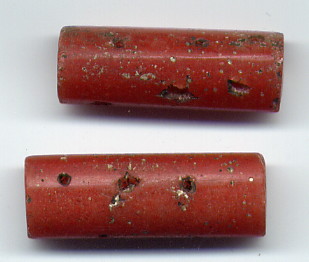I’ve always considered Ghana to be the glass bead-making hub of Africa. Such is the quantity and diversity of Recycled glass beads made in the region, it would be natural to assume the Krobo and Asante people were responsible for introducing the wet core technique to other parts of the continent. But, as is so often the case with African beads, the history of Recycled glass beads is a little more steeped in mystery than most of us realize.
There have been numerous archaeological discoveries in recent years that categorically prove glass-making did not originate in Ghana. Historians Eluyemi Omotoso and Titiola Euba published papers in 1979 and 1981 respectively, detailing their findings in the Yoruba towns of Oyo, Ife, and Ilorin. During their investigations, they discovered numerous small quantities of glass beads in local markets – some of which allegedly date back to the 13th or 14th Century. Almost all were made using an ancient technique known as “lapidary”, which back then, involved manually shaping glass by fracturing old trade beads and re-shaping them by rubbing them against another hard mineral.
These early beads were known as “Ateyun Beads”, and are believed to have been made to imitate semi-precious stones traded by nomadic merchants. Since glass itself was not available in quantitative supply, the Yoruba recycled glass trade beads brought to the region by foreign merchants. Coral beads were considered particularly valuable among the Yoruba, and as the supply began to dwindle, they looked to their talented bead-smiths to produce clever imitations. Similar beads known as “Keta Awuazi” were produced in abundance in Nigeria up until the 1940s.

